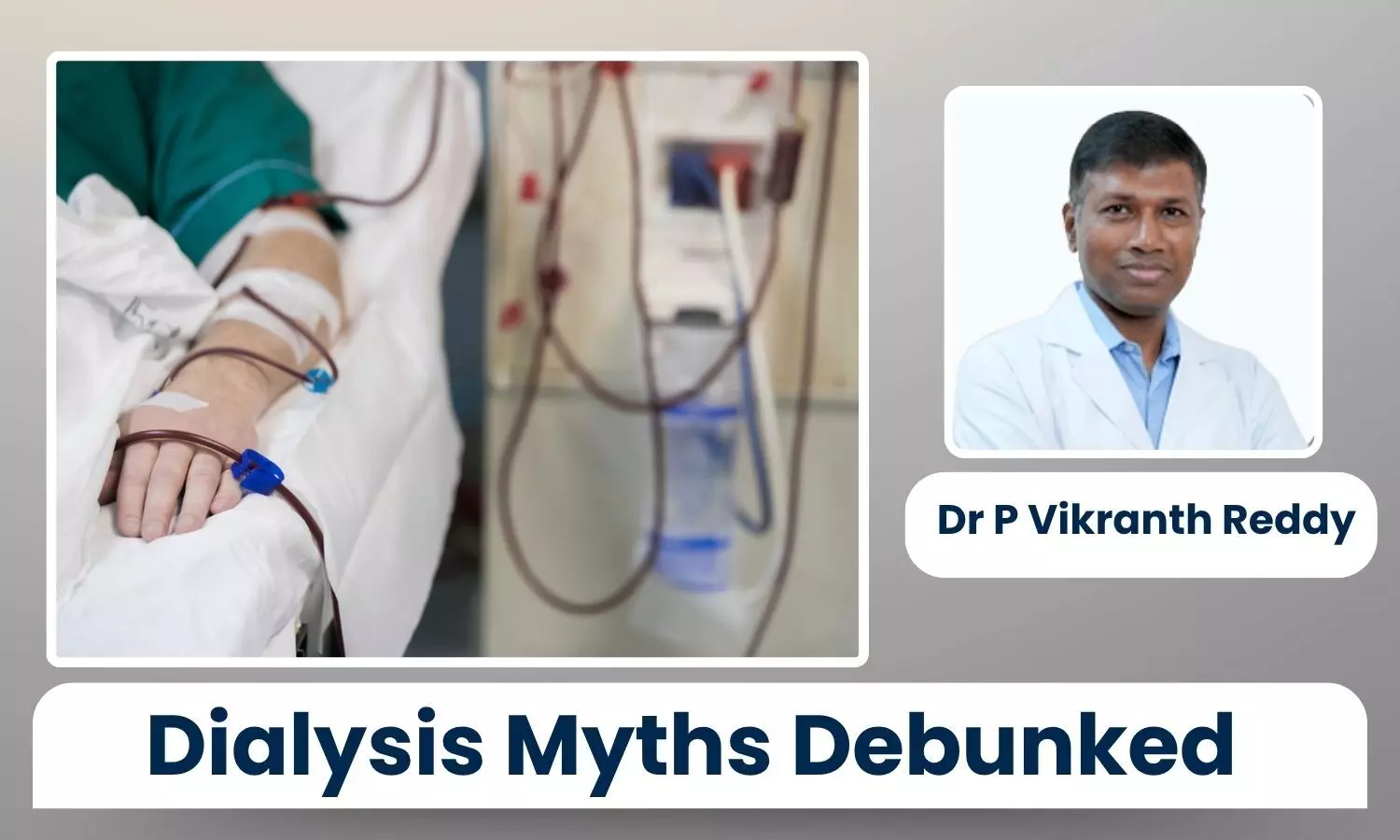Debunking Myths About Dialysis: What Patients and Families Should Expect - Dr P Vikranth Reddy

When someone first hears that they need dialysis, the word itself often feels frightening. Families imagine endless hospital visits, painful procedures, and a life that suddenly shrinks. As a nephrologist, I meet many patients who walk into my clinic with the same questions in their eyes: “What will happen to me now? Can I still live a normal life?”
The truth is, dialysis is not the end of living well — it is a treatment that helps the body when the kidneys can no longer do their job. What troubles many patients is not the dialysis itself, but the cloud of myths around it. In fact, the fear often weighs heavily than the treatment. It helps to clear up some of the common misunderstandings.
Myth 1: Dialysis is always permanent
Many people believe that once dialysis starts, it must go on forever. This is not always true. In problems like acute kidney injury, the kidneys are only under stress for a while and can recover. In those situations, dialysis is needed only temporarily, until the kidneys get their strength back.
For patients with advanced chronic kidney disease, however, it usually becomes an ongoing support. Even then, it should not be seen as a punishment, it is a lifeline, sometimes carrying patients safely forward until a kidney transplant is possible.
Myth 2: Dialysis is unbearably painful
This is perhaps the most common fear. Dialysis is not a painful procedure. In haemodialysis, a small needle prick is the main discomfort, much like a blood test. During dialysis, many patients pass the time by reading, watching something, or even taking a nap.
In the case of peritoneal dialysis, the treatment is done at home through a small tube in the abdomen. Once patients are taught the steps, they usually find it easy to adjust. Feeling nervous before the first few sessions is normal, but most people are reassured to discover how manageable the process really is.
Myth 3: Life becomes restricted to the hospital
Dialysis does require commitment; haemodialysis usually means three sessions a week, about four hours each time. Yet beyond those hours, people often go back to their routines. Many of my patients continue their jobs, travel, and enjoy family life.
Peritoneal dialysis can be even more flexible, since it is done at home and, in some cases, overnight while the person sleeps. With the right planning and support, dialysis does not have to stop anyone from living a full and active life.
Myth 4: Dialysis cures kidney disease
Dialysis takes over the job of removing waste and extra fluid, but it doesn’t cure the kidney disease. This is why regular check-ups with a nephrologist remain vital.
Even after starting dialysis, simple daily habits, like eating less salt, keeping blood pressure and sugars under control and following dietary advice, make a big difference in overall health and wellbeing. A kidney transplant, when possible, is the closest step toward a long-term cure.
Myth 5: Dialysis means a very short lifespan
Many patients worry that dialysis is only a temporary lifeline. The truth is, with proper care and medical guidance, many people live for years on dialysis. Long-term health depends not only on the treatment but also on managing conditions like diabetes, high blood pressure, and heart disease.
I care for patients who have been on dialysis for over ten years and still lead fulfilling lives, working, enjoying their hobbies, and spending time with family.
What patients and families should really expect
Dialysis is a commitment, but it is also an opportunity — an opportunity for the body to keep functioning and for the person to continue living. Patients often tell me that their greatest relief comes when they realise life does not have to stop. Energy levels improve, appetite returns, and the fog of toxins clears once treatment begins.
Families play a big role, too. Providing emotional support, helping with diet and appointments, and treating the patient with dignity all make the journey smoother. It is not unusual for patients to feel low in the beginning, but with encouragement, they regain confidence and adapt to the routine.
If you or a loved one has been advised dialysis, know that you are not alone. Across the world, many people live full and meaningful lives while on dialysis. It should never be seen as the body giving up, but rather as a medical support that offers the kidneys and the person a second chance.
Instead of seeing it as the end, think of it as a new chapter — one that, with the right guidance and care, can still be filled with health, hope, and dignity.
Disclaimer: The views expressed in this article are of the author and not of Health Dialogues. The Editorial/Content team of Health Dialogues has not contributed to the writing/editing/packaging of this article.


